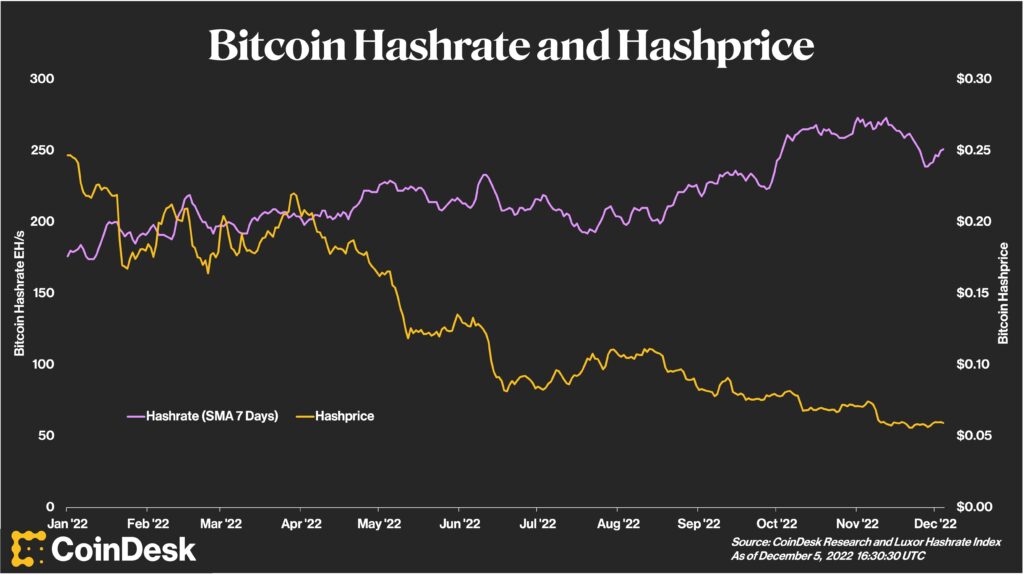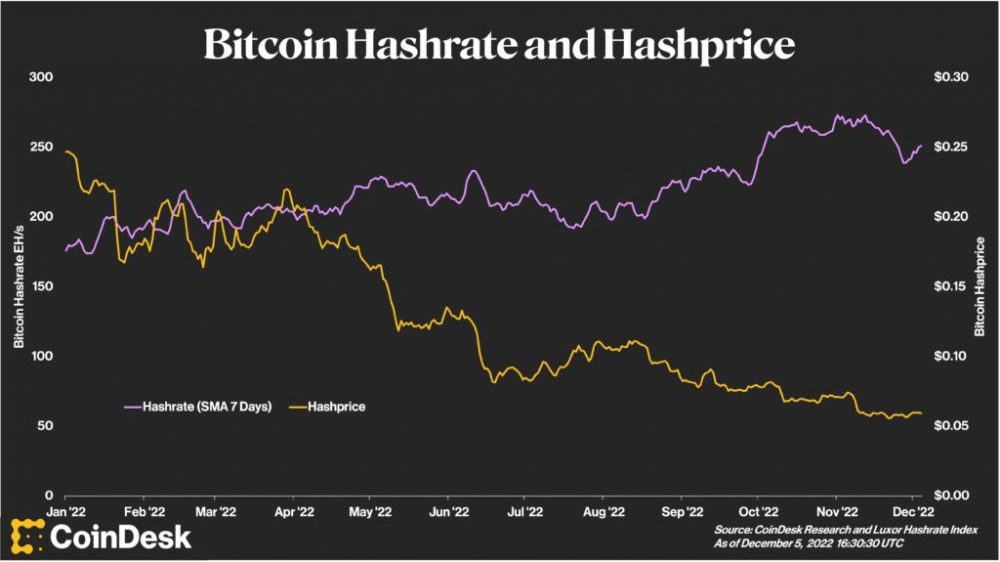Bitcoin mining difficulty, or the difficulty of mining a Bitcoin block, dropped 7.32% today as miners shut down the machines as a brutal bear market consumed profits. Here are the details…
Biggest drop in Bitcoin mining difficulty since July 2021
According to data from BTC.com mining pool, the adjustment at block height of 766,080 was the largest downward change since July 2021. cryptocoin.com As we reported, July 2021 was the time when China banned the industry and then a large number of miners left the network. Previously, the country was the largest Bitcoin mining center in the world.

The mining difficulty is automatically adjusted based on the hash power or computing power available online to keep the time required to mine a Bitcoin block roughly constant. The more miners work, the higher the difficulty. In the past few months, Bitcoin miners have been caught between a stubbornly low Bitcoin price that has slashed their revenues and high electricity rates that have driven up costs. Compute North has filed for Chapter 11 bankruptcy as major manufacturers such as Core Scientific (CORZ) and Argo Blockchain (ARBK) grapple with liquidity woes.
While the hashrate of projects started months ago has come to fruition, the situation has worsened with the delivery of new, more efficient machines and the introduction of more miners. Between early August and the last upward adjustment on November 21, hashrate and difficulty increased by about a third.

Crypto winter also affects mining
The reality of crypto winter now seems to have caught up with the industry and Bitcoin miners are shutting down their machines. The hashrate began to drop in mid-November as profitability took a hit. However, it is well above the levels seen after China’s pressure on the industry. According to Luxor’s hashprice indicator, the profitability of mining has dropped nearly 20 percent in the last month.
“At these low profitability levels, even miners using energy-efficient machines like the Antminer S19j Pro need access to electricity priced at less than $0.08 per kWh,” said Luxor analyst Jaran Mellerud. Mellerud said that while the average energy price on the network is about $0.05 per kWh, many miners pay about $0.07 to $0.08 per kWh.

In addition to natural gas, energy prices have also increased in recent days. “Miners who buy spot electricity and are already operating close to breakeven point may have faced electricity prices so high that they put their operations into negative cash flow territory,” Mellerud said. Meanwhile, the recent low hashrate and difficulty do not make the network any more vulnerable to attacks. According to data from BTC.com, the hashrate is scattered between five major mining pools and 12 other smaller mining pools.







